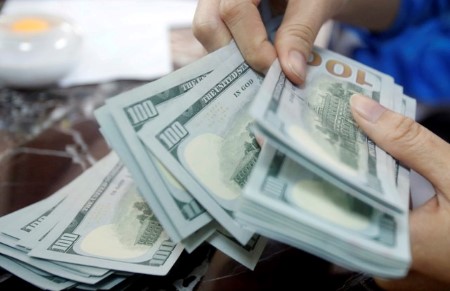




Quarterly Economic Growth Release: More BSP cuts to come
 DOWNLOAD
DOWNLOAD

Monthly Economic Update: Fed catches up
 DOWNLOAD
DOWNLOAD

Inflation Update: Steady and mellow
 DOWNLOAD
DOWNLOAD


US yields retreat after strong Treasury auction

NEW YORK, March 26 – Treasury yields retreated slightly on Tuesday after strong demand at an auction of USD 67 billion in five-year notes, as the market awaits key inflation data later this week to gauge when the Federal Reserve may begin cutting interest rates.
Yields rose earlier on Tuesday following the release of a Commerce Department report that showed durable goods orders rebounded last month in another sign of a resilient US economy that boosted growth prospects in the first quarter.
The report suggested US manufacturing could be regaining its footing after it struggled in the wake of the Fed’s aggressive tightening of monetary policy to tame inflation.
The Treasury sold USD 67 billion of five-year notes at a high yield of 4.235%, or about seven-tenths of a basis point less than yields traded at the bidding deadline.
“We’re running up against month-end, and with a holiday on Friday that probably accelerated some of the buying and also probably motivated a little bit more auction buying rather than trying to find some value later on,” said Tom Simons, senior economist at Jefferies in New York.
The two-year Treasury yield, which typically moves in step with interest rate expectations, edged up 0.8 basis points to 4.595, down from the session high of 4.618%.
The yield on 10-year Treasury notes fell 1.5 basis points to 4.238%, after earlier hitting 4.273%.
The market now awaits the release of the personal consumption expenditures price index (PCE) on Friday for potential insight into whether the Fed begins to cut rates in June, which it now gives about a 70% probability, according to CME Group’s FedWatch Tool.
Simons, however, said such scrutiny was overdone.
“I don’t think we’re any closer to knowing when they’re going to do something and I don’t think that the Fed necessarily is any closer to knowing when they’ll do something,” he said.
Gennadiy Goldberg, head of US rates strategy at TD Securities in New York, said such intense focus showed markets still wanted to see a clear sign that inflation is slowing down.
“That’s why yields are moving around. Traders are looking at every single data point, whether it’s crucial or not, to try to assess where rates go next,” he said.
The Treasury is scheduled to auction USD 43 billion of seven-year notes on Wednesday.
The market expects the Fed to cut its benchmark overnight interest rate by 78 basis points – a bit more than three one-quarter-percentage-point cuts – by the end of this year. That is less than half of what markets bet would happen earlier this year, but is now in line with Fed projections.
US central bank policymakers, however, have raised their outlook for the longer-term federal funds rate, which the market will eventually need to take into account.
“Past research and Fed targets suggested 2.5% was about right” for the federal funds rate, said Dec Mullarkey, managing director of investment strategy and asset allocation at SLC Management in Boston.
“But persistent US fiscal deficits and financial conditions that seem less sensitive to Fed rates have led to a rethink. Various research suggests something in the 3%-3.5% may be a better target,” he said.
The gap between yields on two- and 10-year Treasury notes, seen as a recession harbinger when short-term securities yield more than longer ones, narrowed to -36.0 basis points. The gap has been negative, or “inverted,” since July 2022.
The yield on the 30-year Treasury bond slid 2.4 basis points to 4.402%.
The breakeven rate on five-year US Treasury Inflation-Protected Securities (TIPS) was last at 2.438%.
The 10-year TIPS breakeven rate was last at 2.317%, indicating the market sees inflation averaging about 2.3% a year for the next decade.
(Reporting by Herbert Lash; Editing by Nick Zieminski, Tomasz Janowski, and Paul Simao)
This article originally appeared on reuters.com





 By Reuters
By Reuters